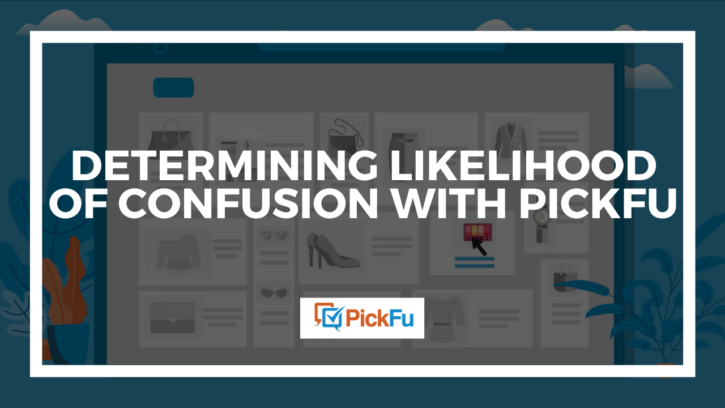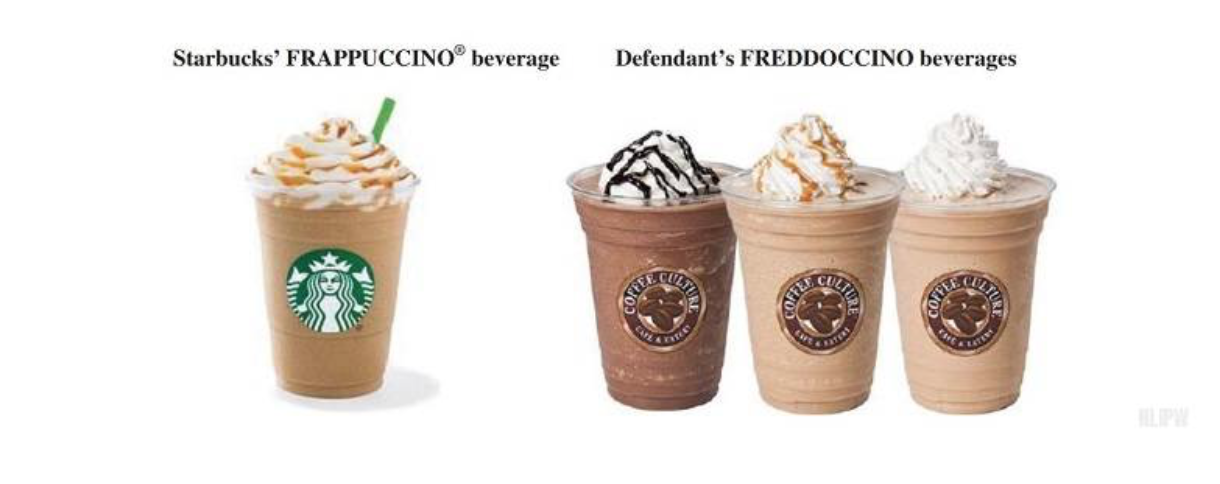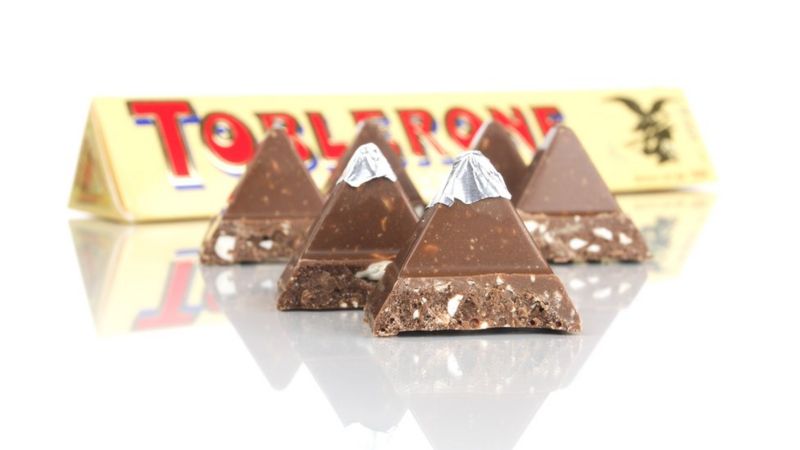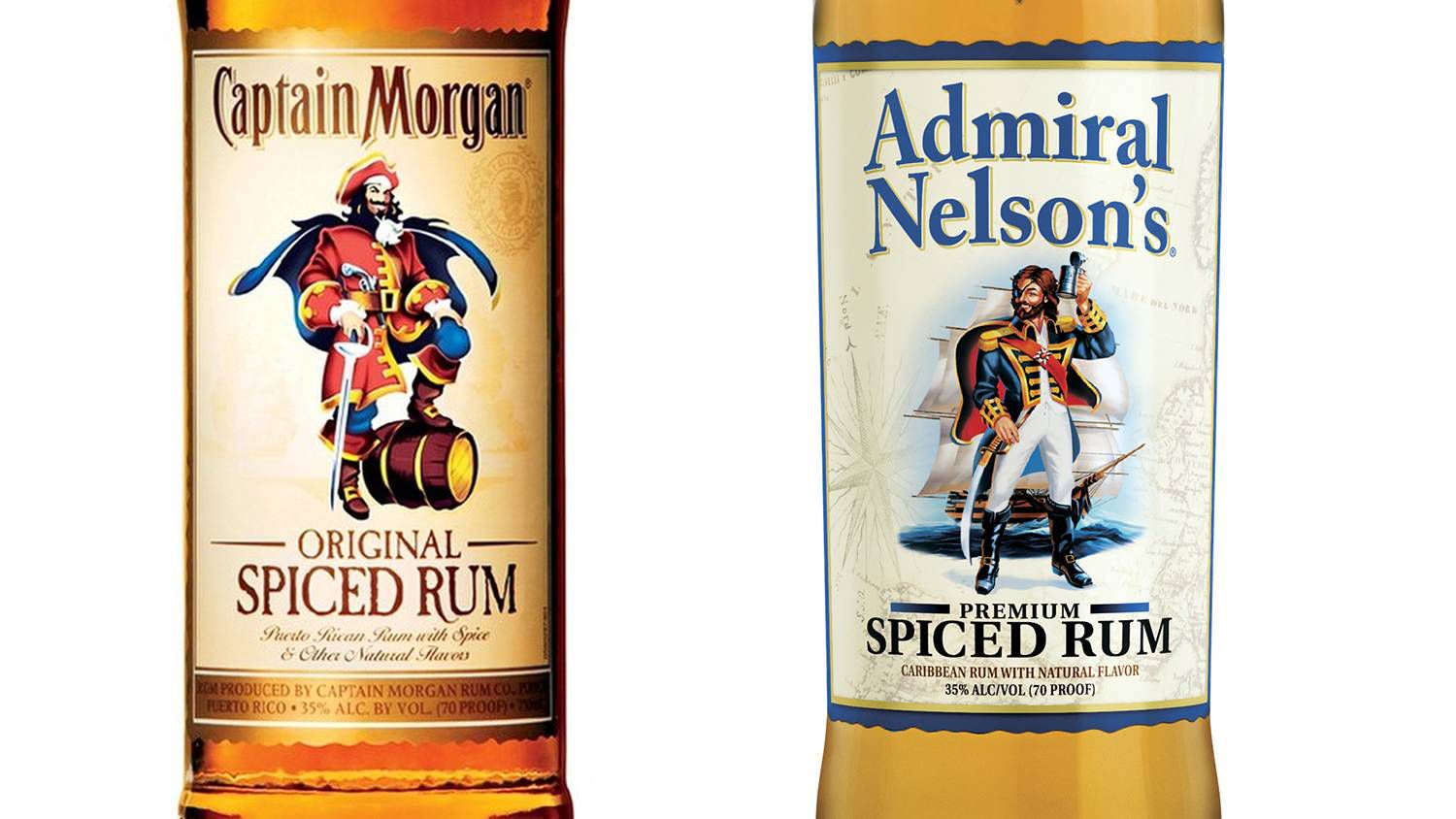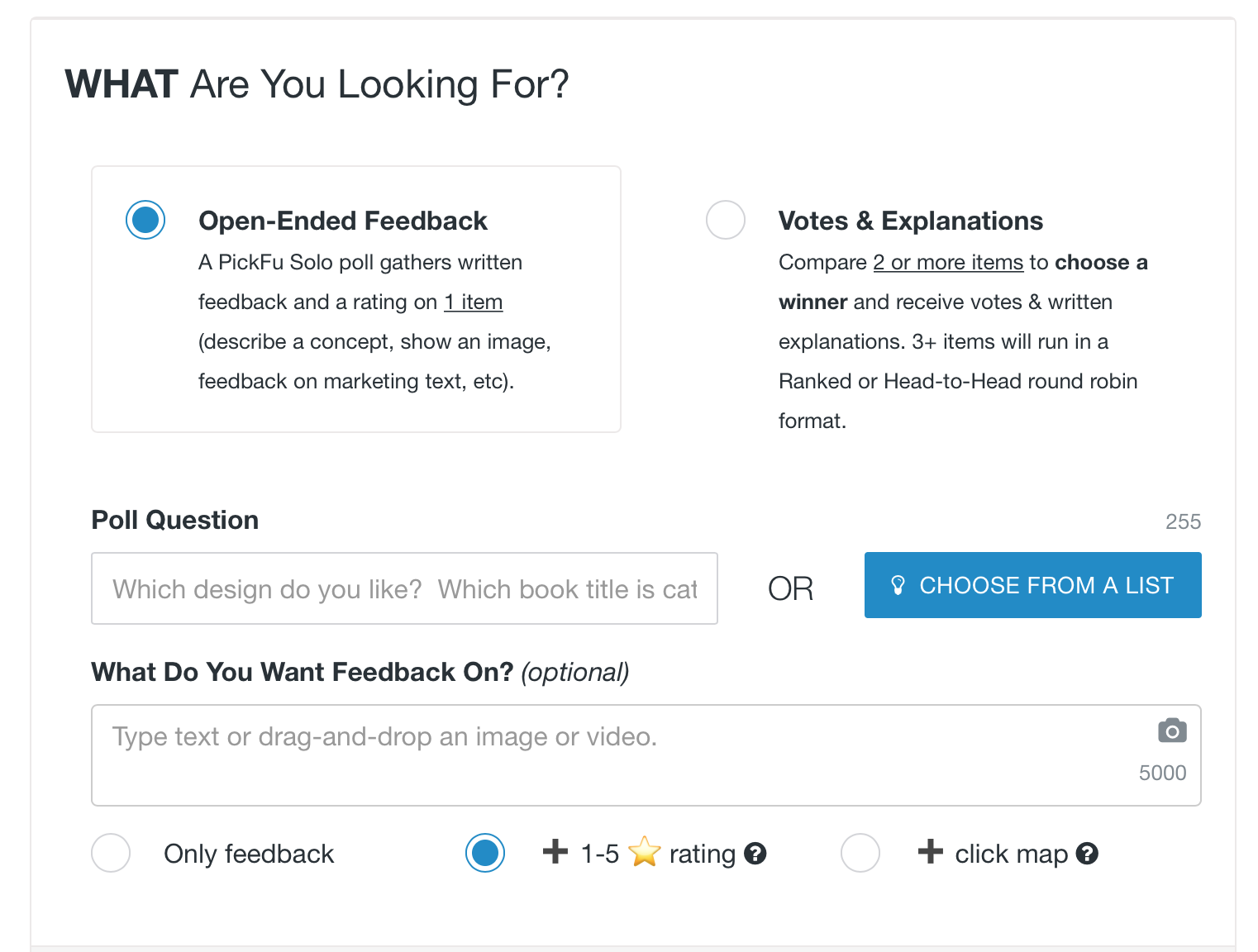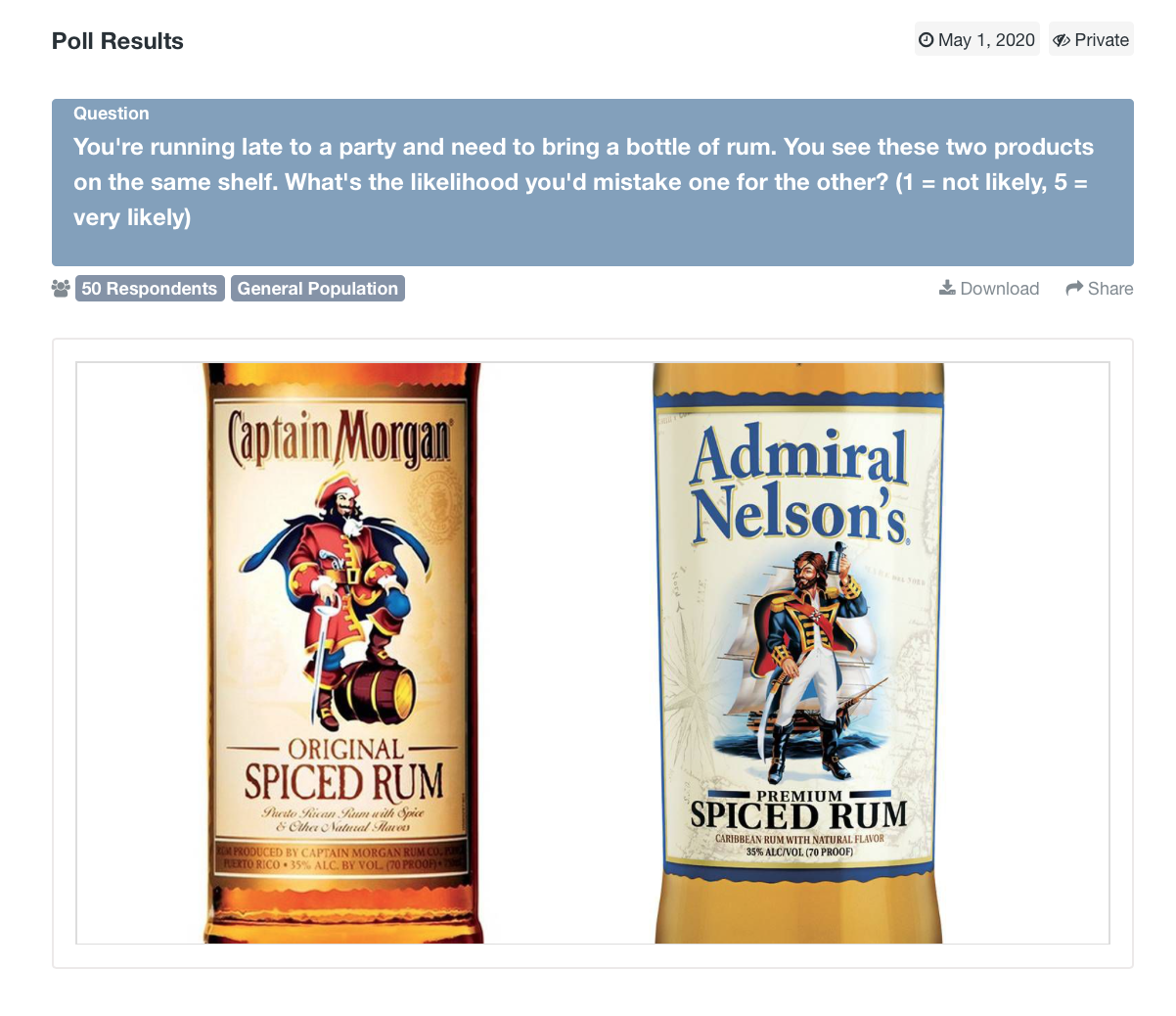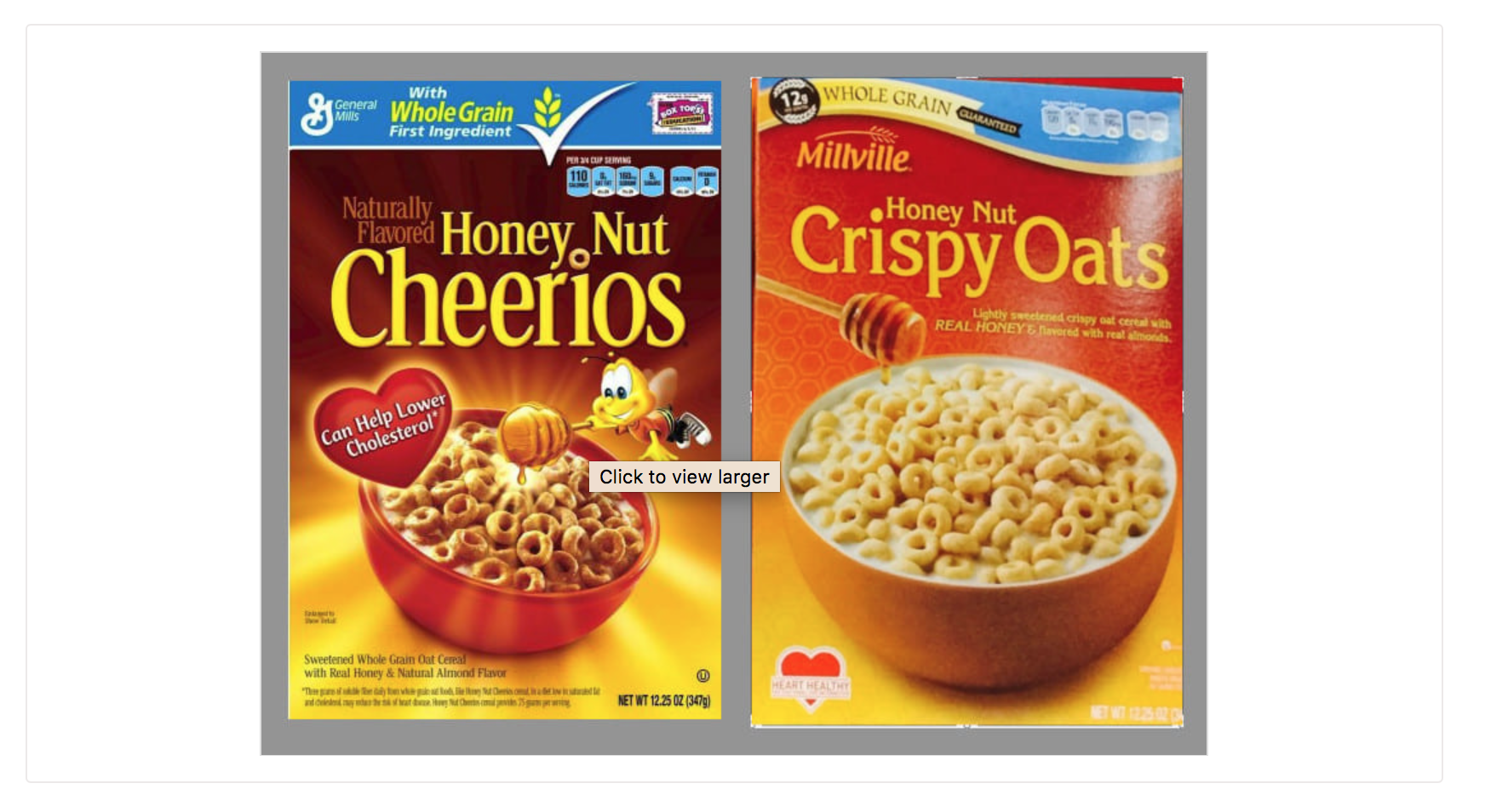Say you’re a coffee business and you want to create an iced, blended coffee drink similar to Starbucks’ beloved Frappuccino® Blended Beverage. Be careful what you name it. You don’t want to create likelihood of confusion.
Coffee Culture Cafe, a Canadian coffee franchise, knows this firsthand. Ten years after Starbucks introduced its now-iconic Frappuccino®, Coffee Culture Cafe launched a blended-ice coffee drink called the Freddoccino.
Freddoccino, Frappuccino®. The names and logos are different — but not that different.
Starbucks noticed, of course. Long story short, they took Coffee Culture Cafe’s parent company to court for trademark infringement, aiming to prove likelihood of confusion.
What is likelihood of confusion?
There is likelihood of confusion if consumers are likely to mistake a product for a similar trademarked product from a
If the senior brand can prove
PickFu is a survey platform that can help prove or disprove likelihood of confusion. How? We’ll get to that.
First, let’s take a deeper look at trademarks and likelihood of confusion.
What are three types of trademarks?
In the words of the United
Well-known trademarks include Nike’s “Just Do It” slogan, the Apple logo, and the word Gucci. Trademark law prevents other brands from using these slogans, logos, or words.
Here are three types of trademarks:
Word or design trademarks
Word or design trademarks can be words or phrases or designs and distinctive marks such as logos.
A company can trademark a word and design together.
Certification marks
A certification mark shows that a product or service, or a company using the mark, has met certain standards. Certifying organizations own these marks and control who can use them.
One example is the USDA Organic seal, which companies use to show consumers that a product is certified organic by the U.S. Department of Agriculture. In order to use this seal, a company must go through a rigorous certification process.
A certification mark can be a seal or design. It can also include phrases or acronyms.
Distinguishing shape trademarks
This trademark is all about shape. Did you know that the iconic shape of Coca-Cola bottles is trademarked? So is the triangular shape of a Toblerone chocolate bar.
Other famous shape trademarks include Hershey’s Kisses and Pringles’ smooth, curved chips.
How similar can trademarks be?
There are hundreds of thousands of registered trademarks in the world. Some are bound to resemble each other.
How can you keep from infringing on another trademark?
It comes down to how likely your trademark is to confuse potential customers.
What is considered trademark infringement?
The USPTO defines trademark infringement as “the unauthorized use of a trademark or service mark on or in connection with goods and/or services in a manner that is likely to cause confusion, deception, or mistake about the source of the goods and/or services.”
In other words, if the owner of a registered trademark thinks that another trademark is too similar to its own, to the point where it would confuse customers, that could be considered infringement.
A business or brand must have a registered trademark in order to file a trademark infringement lawsuit.
There are three things a plaintiff must prove in an infringement case: ownership of a valid trademark, seniority of the mark, and the likelihood that consumers will be confused by the offending mark.
What is a test for trademark infringement?
There are various factors, known as Dupont factors, that courts use to determine trademark infringement. These include:
Relatedness of goods or services
Do the goods serve similar purposes? That’s a key question in an infringement case.
Take the Freddoccino. If it were a lipstick instead of an iced espresso drink, would Starbucks still have sued? It’s possible, but the case wouldn’t be nearly as strong.
Similarity of marks
How similar are the logos or words? It’s important to note that a name or design doesn’t have to be identical in order for it to be confusing.
Platinum Puff and Platinum Plus are different phrases. But they are both hair care products sold through the same trade channel, and they sound similar. Platinum Plus, the senior trademark, sued and won based on likelihood of confusion.
Similarity in appearance
If the design or the spelling of a brand or product looks nearly identical to an existing trademarked brand, this might be infringment.
Here’s one example: LUTEX and LUTEXAL. They’re almost identical at first glance, which means they have the potential to confuse consumers.
Sound similarity
When you say two competing trademarks out loud, do they sound alike? If so, that might confuse potential customers.
That was the case for the watch brand SEYCOS. A court ruled that customers would likely confuse it with SEIKO, the well-known watch and clock brand.
Similar meanings
Two trademarks that are similar in meaning might also cause confusion. For example, Mr. Clean and Mr. Rust are both cleaning products, but because the meaning of their names are similar, Mr. Rust, the junior mark, is considered infringement.
Design marks
Logos or design marks that are visually similar can cause likelihood of confusion, even if they represent different goods or services.
So, before you create a logo, make sure it’s different than anything you’ve seen. Or if you’ve just trademarked a logo and you see another similar design, make note of it. It could cause confusion among your customers later.
How do you prove likelihood of confusion?
You must first prove your trademark’s seniority and what you stand to lose to the infringing trademark.
To prove likelihood of confusion, key factors to focus on include how similar (or not) the trademarks are in “appearance, sound, connotation, and commercial impression,” as well as “the relatedness of the goods or services” and “evidence of actual confusion,” according to James R. Hastings of Collen, a New York-based intellectual property law firm.
For more on
How can I use PickFu to help determine likelihood of confusion?
PickFu is a polling platform that you can use to split test everything from brand names and logo designs to book titles and app interfaces.
A PickFu poll surveys a panel of over 10,000 U.S.-based respondents. You can start with general audience of 50 people, or choose a targeted audience based on age, ethnicity, education level, and other demographics.
Not only do respondents vote on their preferences, they also submit written feedback explaining their choices — feedback that’s admissible as evidence in trademark infringement cases to help discern likelihood of confusion.
Here’s how PickFu would work if you want to test similar logos.
Step 1: Create an image of your logo next to your competitor’s
Before you begin a PickFu poll, create an image showing the logos side by side, like this.
Step 2: Start an open-ended poll on PickFu
On the PickFu website, select the option to create an open-ended poll.
Then, upload your image and fill out the poll question. You could ask something like, “Imagine you’re in the grocery store. You see these two bags of chips on the shelf. On a scale of 1-5 (with 1 being not likely and 5 being highly likely), what’s the likelihood you’d mistake one for the other?”
Step 3: Analyze the results with an eye toward likelihood of confusion
That’s what we did in the poll below.
About half of the respondents said they would feel some confusion. Here are a few of their comments:
- “If I was in a rush I think there would be a near 100% chance I would mistake these. Everything is almost identical.”
- “I would know the difference between these two. I am a pretty avid drinker, so I know that these are not the same brand. Also, the color schemes are very different, in my opinion.”
- “Since both have a pirate and both are rum, I could see a quick error being made. If
I were to read the title though, it would be obvious which one is which.”
In another poll, we asked whether these two cereal boxes would cause confusion. The majority of respondents said they likely wouldn’t confuse the two, but several said the boxes looked nearly identical.
Let PickFu help you with likelihood of confusion
Whether you’re want to prove that a trademark is infringing on your own trademark or vice versa, PickFu is a method for gathering evidence that can help your case and determine likelihood of confusion.
If respondents think your logo or name is too similar to another brand’s, you might want to rethink it entirely. This could help you avoid a costly court battle.
Read our top tips for testing your business name, then get started on PickFu.
